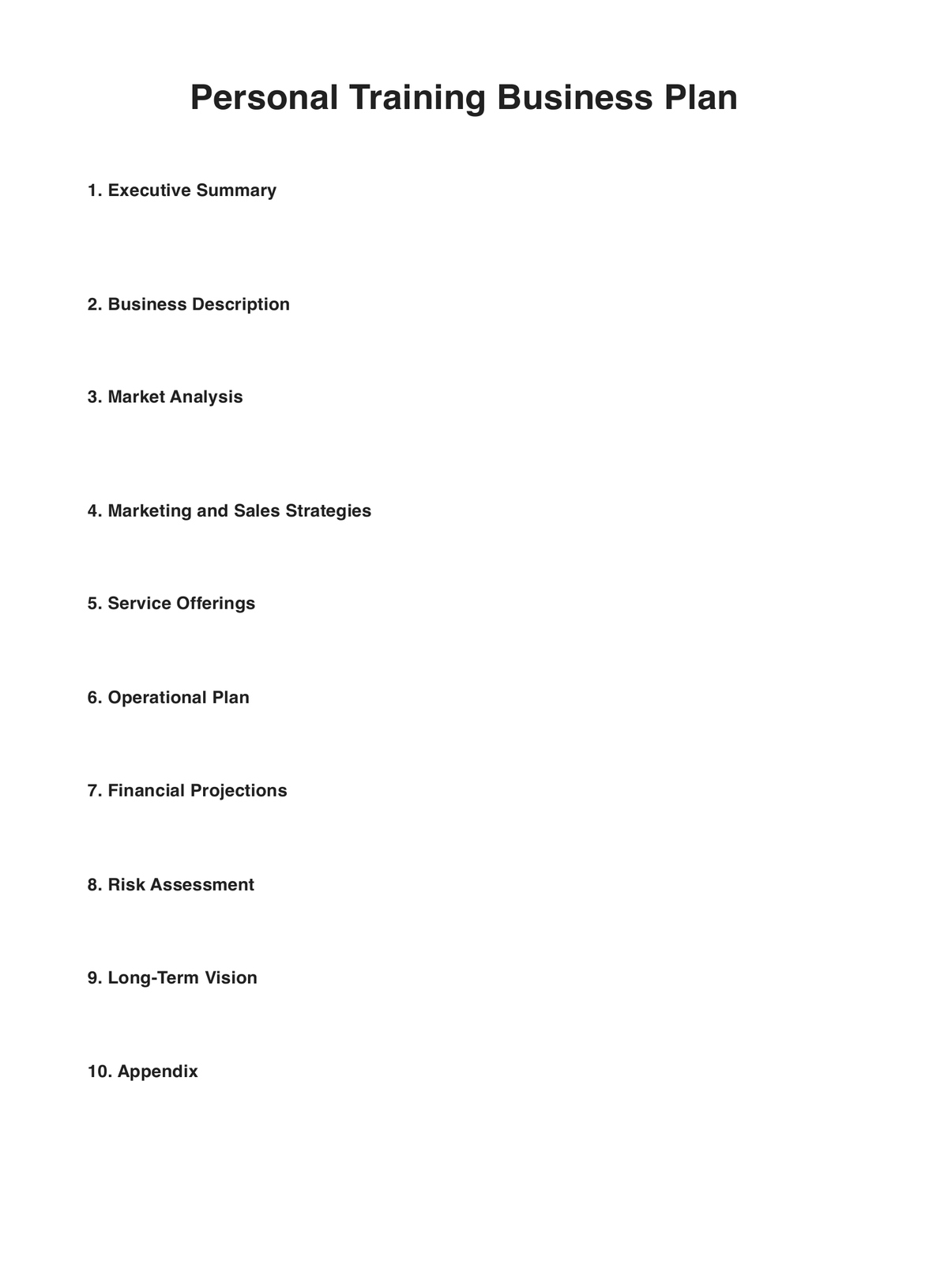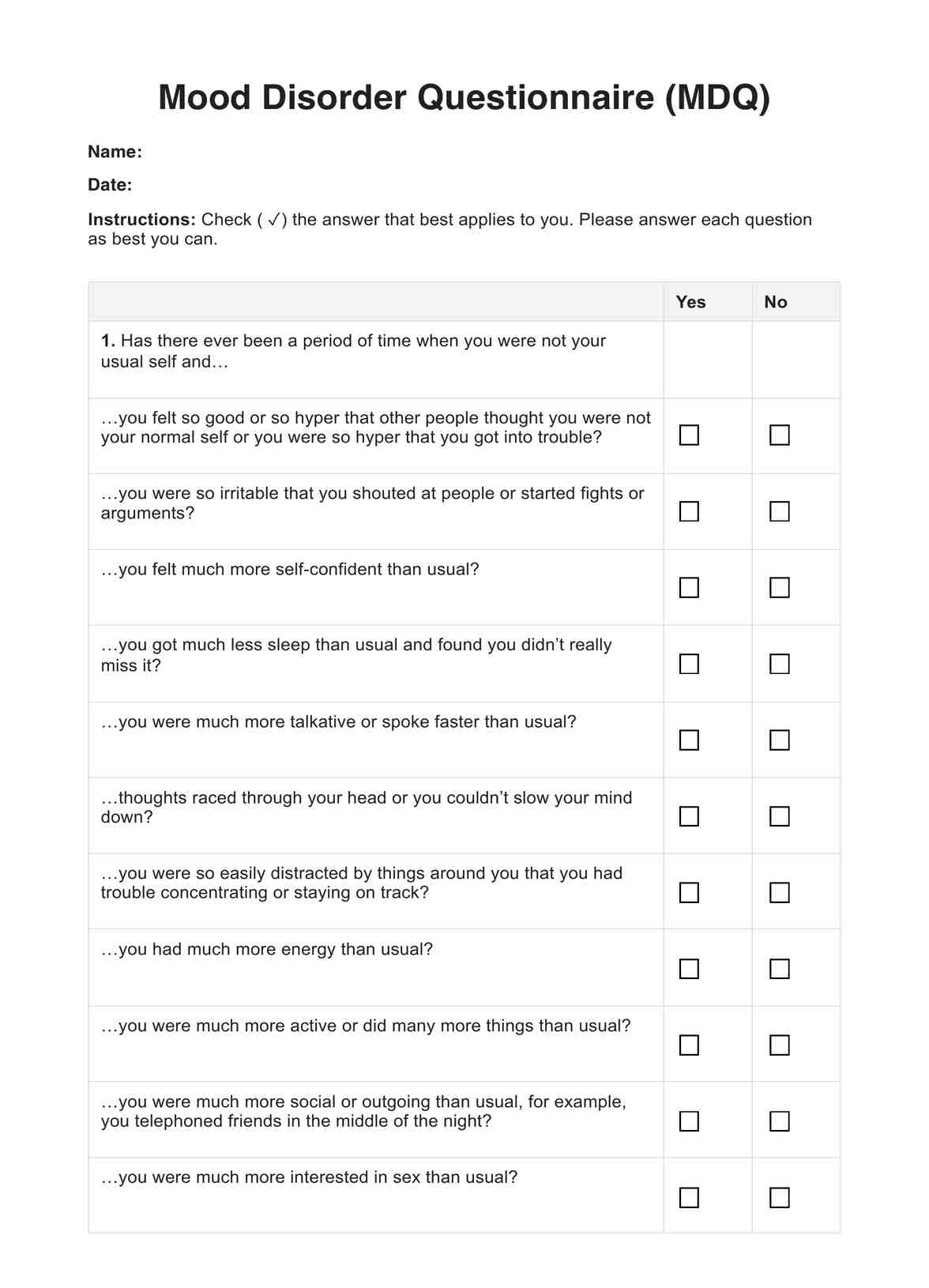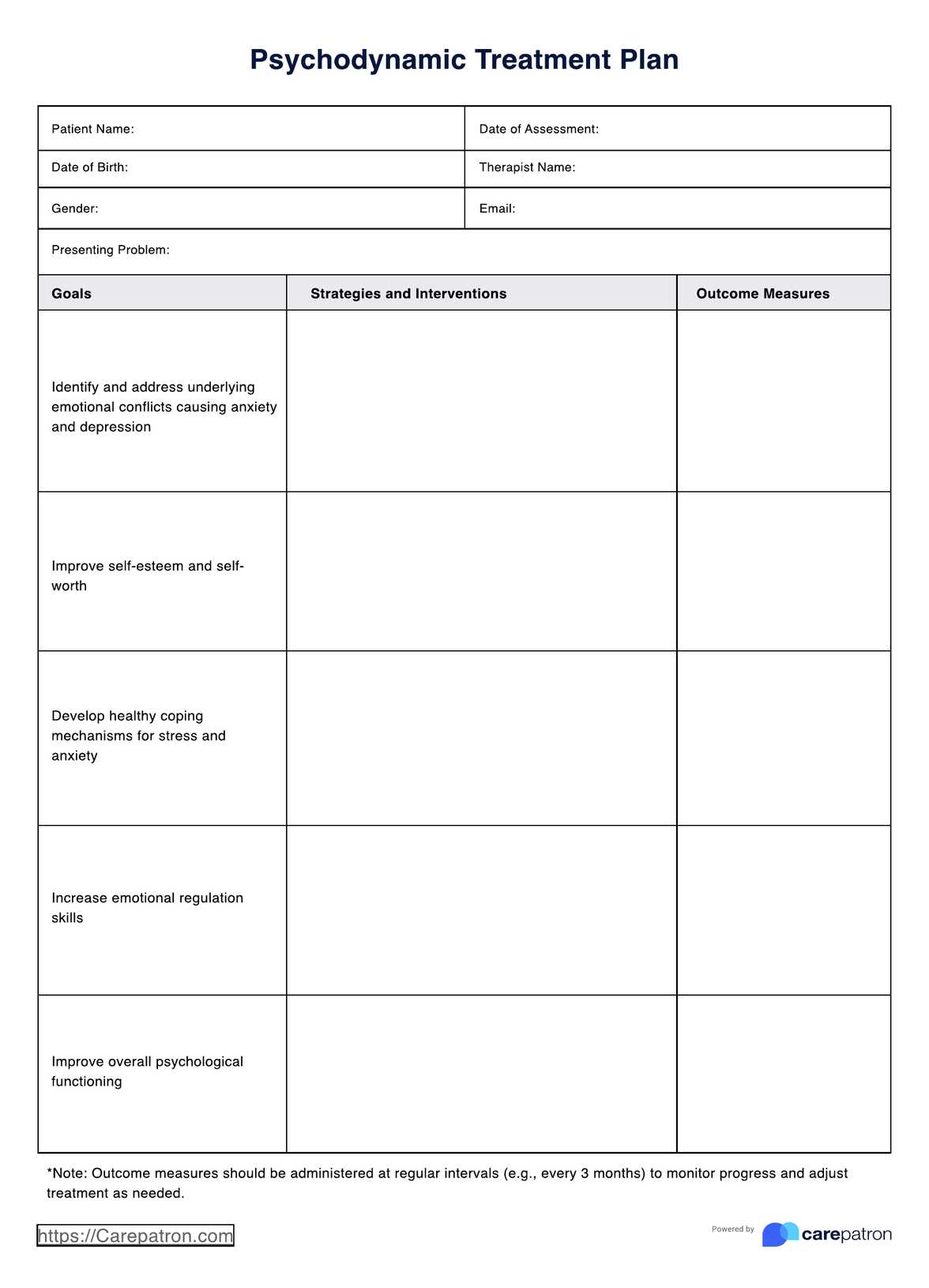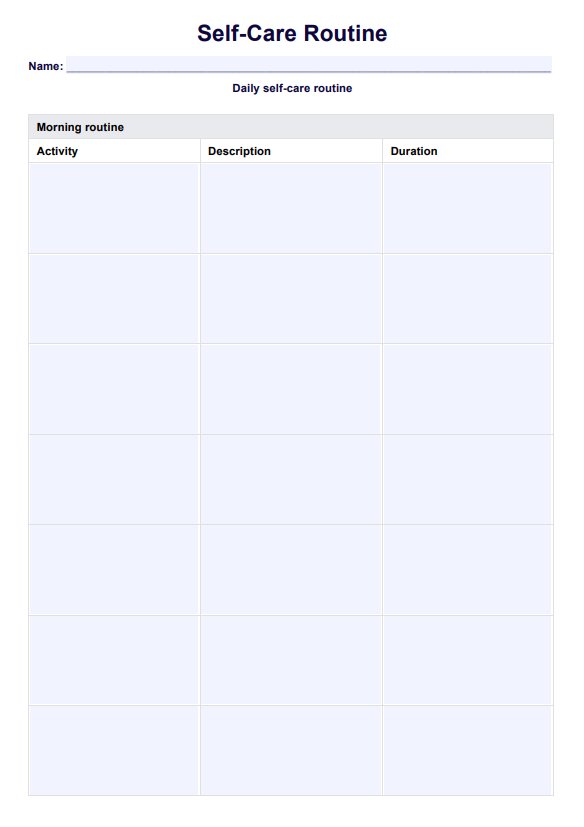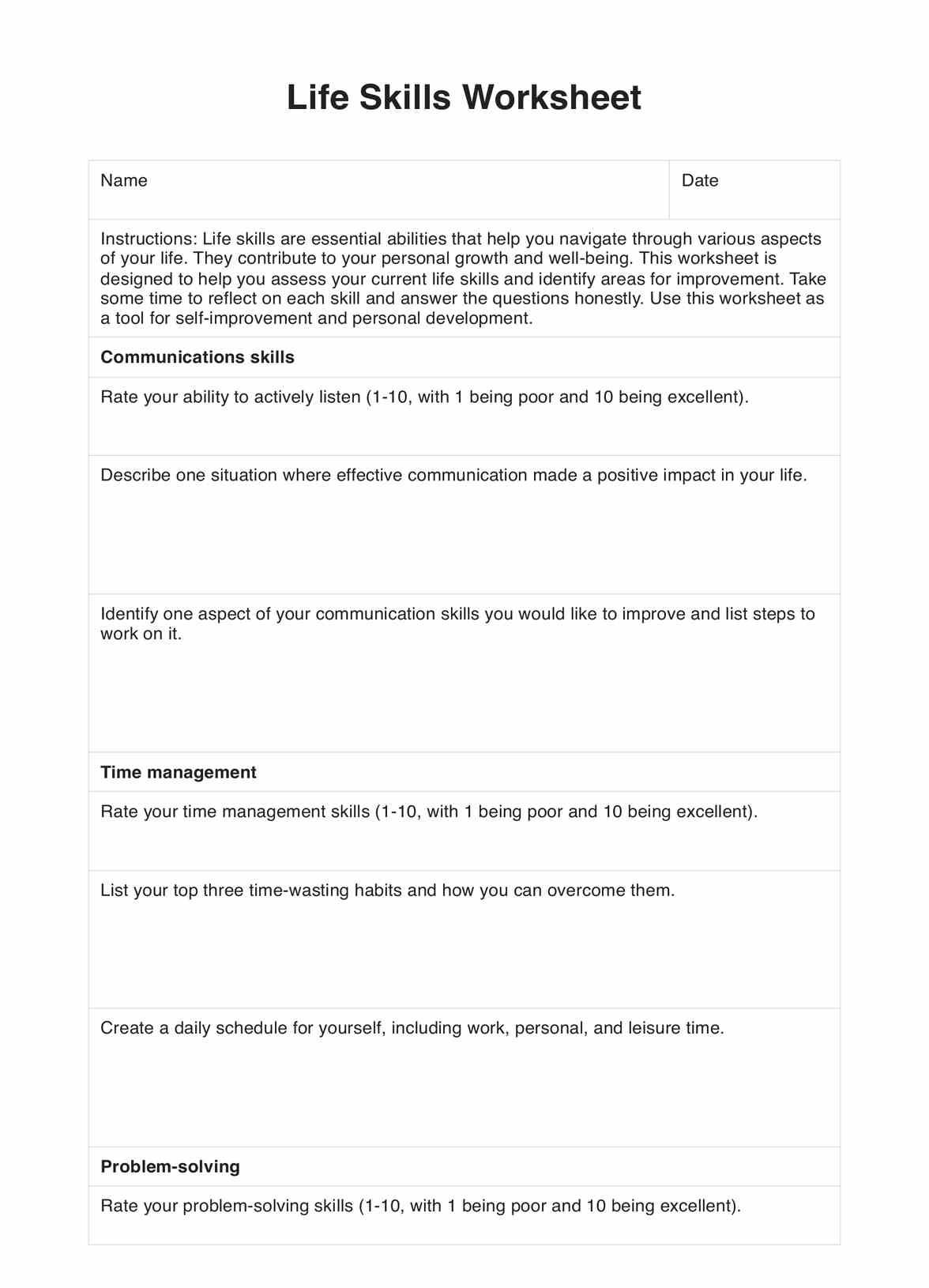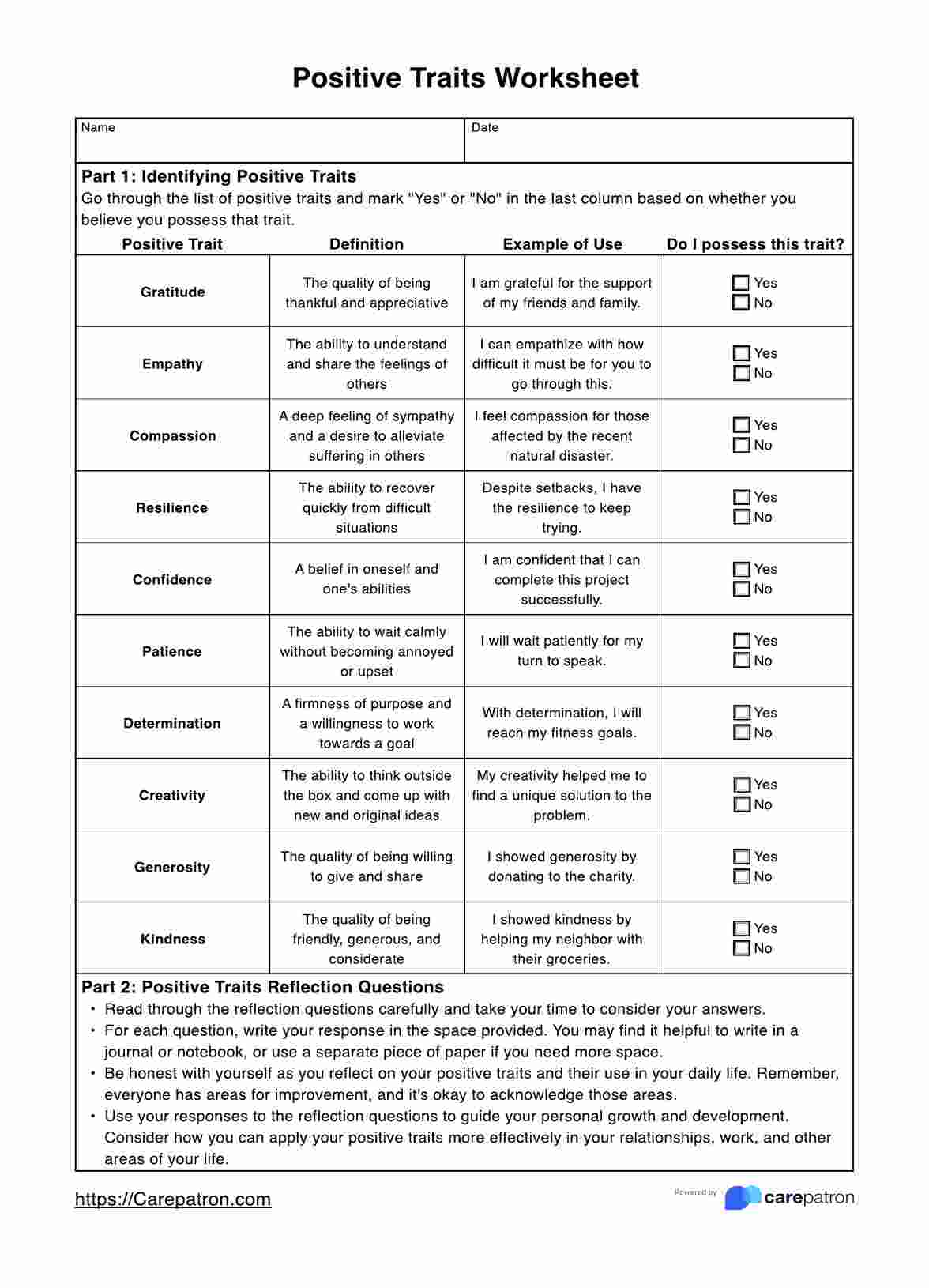Self-Report Inventory
Access a free self-report inventory tool to add to your psychological assessment toolkit. Download your free PDF here.


What is a self-report inventory?
In our daily lives, we often attempt to understand ourselves better - our thoughts, feelings, and behaviors. A self-report inventory steps in as a structured method for this self-reflection process. At its core, a self-report inventory is a type of psychological test or questionnaire designed to explore and evaluate personal characteristics, emotional states, and behavioral patterns. It relies on an individual's introspection and honesty, as participants are asked to respond to a series of statements or questions about themselves. Through their responses, it provides insights into aspects of their own behavior, mental health, personality traits, and even coping mechanisms.
Self-report inventories come in various forms, each tailored to explore different dimensions. Some popular examples include:
- Personality inventories: These tests aim to assess personality and delve into the traits that define how we interact with the world, like the Myers-Briggs Type Indicator (MBTI).
- Clinical inventories: Designed to identify symptoms of mental health conditions, such as the Beck Depression Inventory (BDI).
- Attitudinal surveys: These assess beliefs and attitudes towards various topics, influencing how we perceive our surroundings.
Self-Report Inventory Template
Self-Report Inventory Example
Importance of self-report inventories
Self-report inventories are much more than mere questionnaires. These personality assessment methods are key tools that play a significant role in psychology assessments, counseling, and personal development. Let's dive into why these inventories hold such importance and how they can impact individuals and professionals in the mental health field and self-improvement.
A window into the mind
One of the primary values of self-report inventories is their ability to act as windows into our inner world, personality, emotional state, and behavior patterns that might not be immediately seen. By providing structured and focused prompts, these inventories encourage individuals to self-reflect and articulate feelings or thoughts they might not have otherwise explored or understood.
Objective data collection
In research landscapes, the importance of self-report inventories cannot be overstated. They provide a way to collect data on human behavior, attitudes, and psychological states, contributing significantly to our understanding of psychology. This data is invaluable in creating theories, developing psychological interventions, and refining existing methodologies to better align with human experiences.
Supporting mental health diagnosis
In the context of diagnosing mental health conditions, self-report inventories can provide crucial information that supports clinical assessments. While not diagnostic tools on their own, their results can highlight symptoms, risk factors, and areas of concern that warrant further examination by a professional, facilitating early intervention and support.
Popular self-report inventories
Self-report inventories come in many forms, each designed to explore specific aspects of a person's character, behavior, or mental state. Let's look into three well known personality inventories among the many psychological tests.
Minnesota multiphasic personality inventory
The Minnesota Multiphasic Personality Inventory is one of the most frequently used psychological assessments in mental health. It was developed as an objective tool to diagnose psychiatric disorders and identify personal, social, and behavioral problems.
The MMPI, now in its second revision (MMPI-2), contains 567 true/false items that assess a wide range of psychopathologies. It includes clinical scales like Hypochondriasis, Depression, Hysteria, Psychopathic Deviate, and Paranoia, among others. It's often used in forensic evaluations, career assessments, the process for public safety position selections, and psychiatric and psychological treatment planning.
Myers-Briggs type indicator
The Myers-Briggs type indicator offers a different angle, focusing on personality types. This psychological test decodes how we perceive the world and make decisions, primarily based on theories proposed by Carl Jung.
MBTI clusters personality into 16 different types, found by combining preferences in four dichotomies: Extraversion-Introversion, Sensing-Intuition, Thinking-Feeling, and Judging-Perceiving. It's often utilized in settings like career counseling, team building, leadership training, and personal development to help individuals better understand themselves and how they interact with others.
Eysenck personality questionnaire
The Eysenck Personality Questionnaire was designed by Hans Eysenck and his wife, Sybil, to assess three major dimensions of personality: Extraversion (E), Neuroticism (N), and Psychoticism (P). Later, a revised version of the test, known as the Eysenck Personality Questionnaire-Revised (EPQR), added a scale for measuring Lie (L) or social desirability.
It involves a series of yes/no questions and evaluates how much each individual's personality aligns with these dimensions. Its primary usage lies in clinical psychology and personality research, as the EPQ is known for its psychometric properties and its theoretical usage for biological and genetic research in personality.
California psychological inventory (CPI)
The California Psychological Inventory offers an in-depth look at interpersonal behavior and social interaction characteristics. With 434 items, it evaluates traits within everyday contexts, rather than psychopathologies. Widely applied in organizational, educational, and clinical settings, the CPI helps in understanding and predicting how people's behavior in various scenarios.
16 personality factor questionnaire (16PF)
The 16PF is designed to assess the full range of normal adult personality across 16 primary factors and five global factors. This inventory helps clinicians and researchers comprehend personality structure deeply, making it a versatile tool for personal development, career counseling, and psychological research.
Each self-report inventory offers unique insights and applications, cementing their value in psychological assessments. While they have some limitations, including biases and the potential for misinterpretation, these tools are integral for professionals to understand and support individuals in achieving better mental health and personal growth.
Next steps
Self-report inventories are helpful tools for gaining deeper self-awareness and can significantly contribute to your personal and professional development. However, what comes after administering these self-report inventories? Here are the next steps you can take:
Reviewing results and preparation
After your client has completed a self-report inventory, the next step is a detailed analysis of their responses. Take the time to review the results carefully before the follow-up session. It’s essential to consider the client's background information, such as their case history and personal circumstances, which will aid in interpreting the inventory results accurately.
Interpretation and analysis
As a practitioner, it is important to interpret the results within the framework of the inventory's clinical validity and the individual's unique context. Look for patterns and themes that emerge from the responses. Remember that while these inventories can be highly informative, they are just one aspect of a comprehensive assessment. Maintain an objective perspective when integrating these findings into your overall understanding of the client's situation.
Discussions with the client
Consider scheduling a session with the client to discuss the results. Ensure that this conversation is interactive, allowing the client to express their thoughts and feelings about their results. Your role is to ensure that the client understands their results without any jargon or overly technical explanations. Use clear, understandable language to explain the findings and what they potentially mean in the client's life.
Integrating results into treatment planning
Use the insights gained from the inventory to refine the client's treatment plan. This might involve setting new therapeutic goals, introducing specific interventions, or adjusting existing strategies. Engagement with the self-report inventory should inform your clinical decisions. Rely on its outcomes to guide your professional judgment about the best course of action for the client's needs.
Using this California psychological inventory template and personality questionnaire template can elevate your practice and client outcomes. These tools aid clients in creating actionable plans for progress.
Limitations to this self-report inventory
While self-report tests are undeniably valuable tools in psychological assessment and self-understanding, they are not without some limitations. Appreciating and considering these disadvantages in using these tests and interpreting results or applying them in your life or practice is crucial.
Self-report bias
Self-report inventories, by their nature, rely on the individual's own perception and knowledge of themselves. Factors like wishful thinking, test takers intending to fake good, and memory errors can affect the actual picture, leading to inaccuracies in the responses.
Lack of contextual consideration
These inventories may not take into account the complete context of an individual's life. Factors like current life circumstances, cultural influences, and historical experiences are not necessarily captured in a self-report inventory, which can limit the interpretation.
Complex interpretation
Interpreting the results from a self-report inventory is not straightforward. Without professional guidance, individuals may misinterpret scores or fail to understand the nuances in their responses, leading to misunderstandings.
Potential for oversimplification
Some critics argue that self-report inventories can oversimplify complex aspects of personality or psychological states. For instance, categorizing individuals into predefined types may not fully capture the human personality's full richness and uniqueness.
Administration and scoring errors
Errors can occur during the administration or scoring process, potentially affecting the accuracy of the inventory's results. While most inventories have safeguards in place to minimize these errors, they can still occur, especially in the absence of professional guidance.
Ignores subtle changes over time
While self-report inventories provide a snapshot of the person's feelings and behaviors at a specific point in time, they may not accurately capture subtle changes or fluctuations in an individual's state over time.
Commonly asked questions
The primary drawback of using a self-report inventory is the potential for response bias. This can occur when respondents, consciously or subconsciously, provide answers they believe are socially desirable or expected rather than those that truly reflect their thoughts, feelings, or behaviors. Response bias can lead to inaccurate or misleading results.
Two significant strengths of self-report inventories are ease of administration and depth of insight. These inventories can be easily distributed and completed by a large number of participants in paper and pencil format without requiring extensive time or resources from researchers or clinicians. These personality assessment tools can provide valuable insights into an individual's internal experiences, thoughts, and feelings, which might not be readily observable from the outside.
Self-report inventories are commonly used by psychologists, psychiatrists, counselors, and other mental health professionals for purposes such as diagnostic assessment, treatment planning, research, and personality assessment. They are also often used in organizational settings for employee selection, career development, and team building.


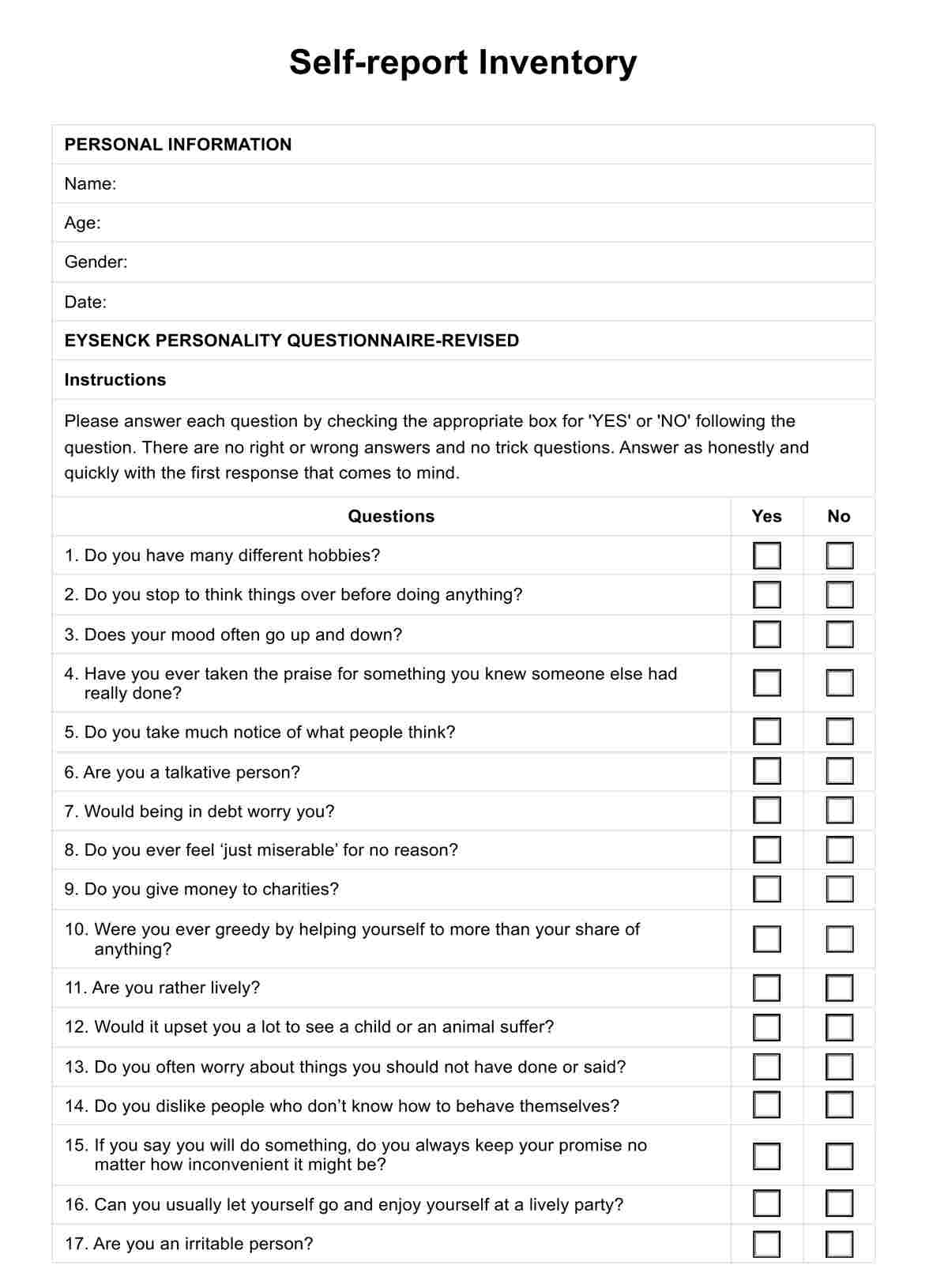
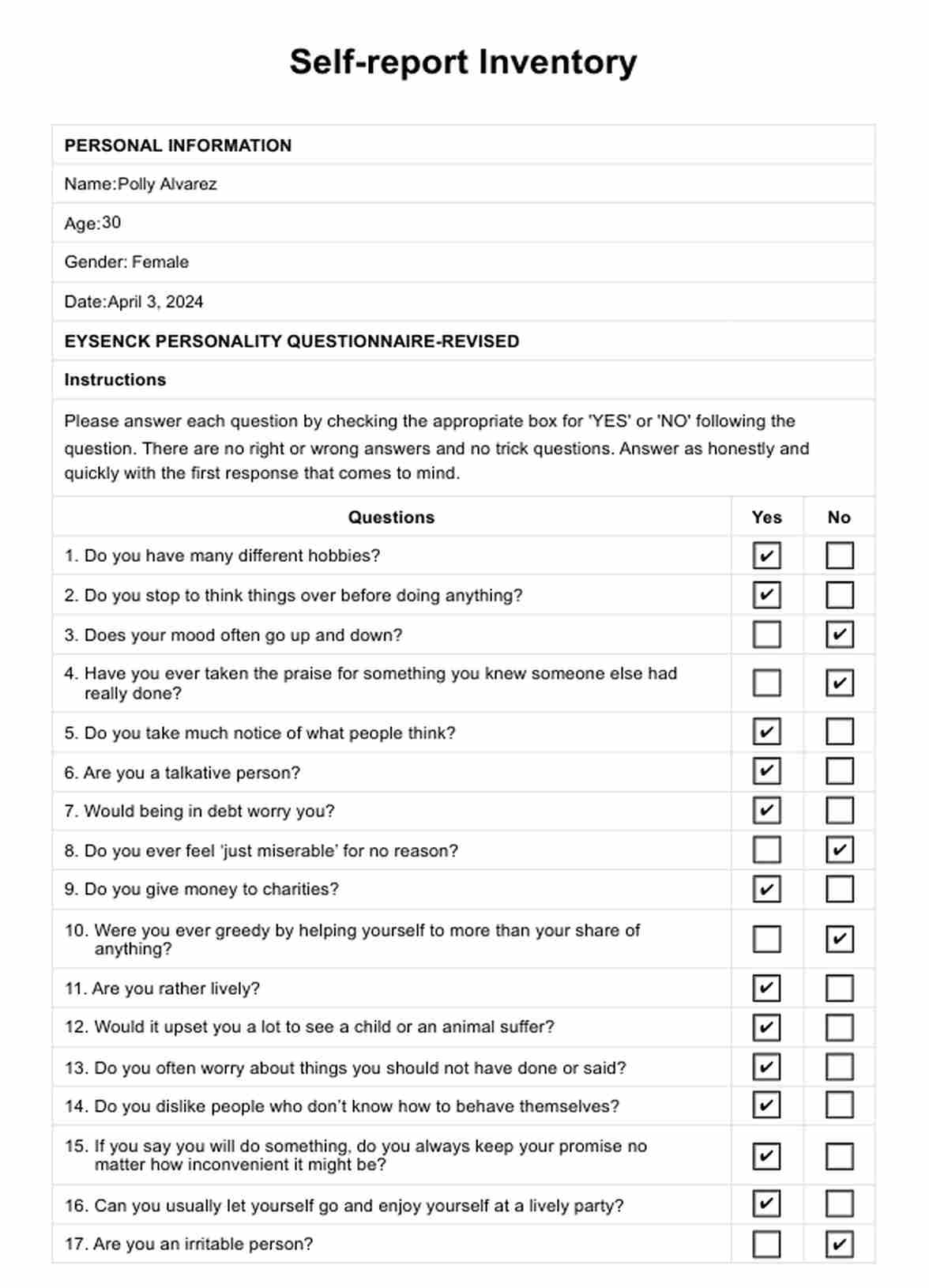

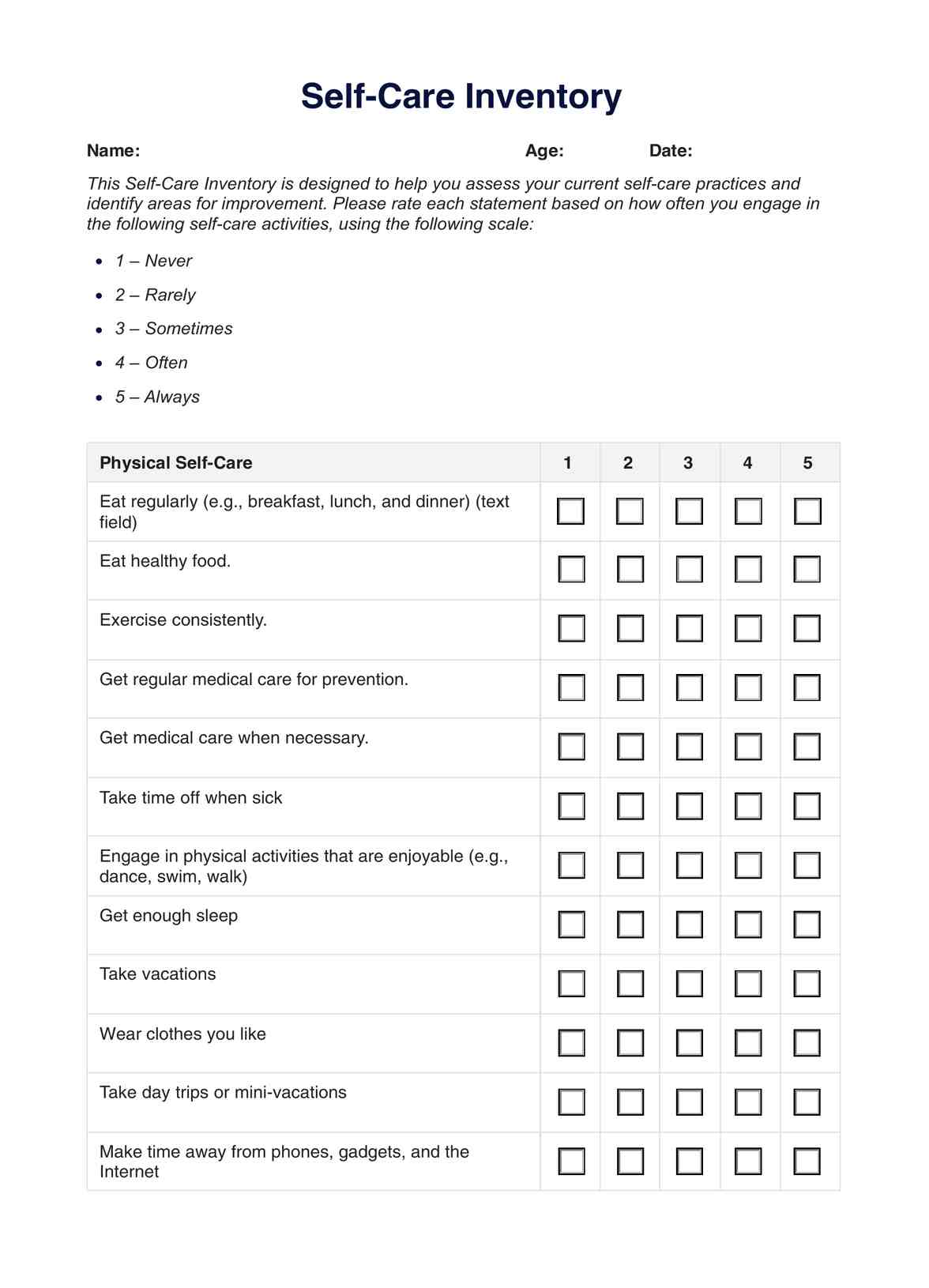
















-template.jpg)



















































































